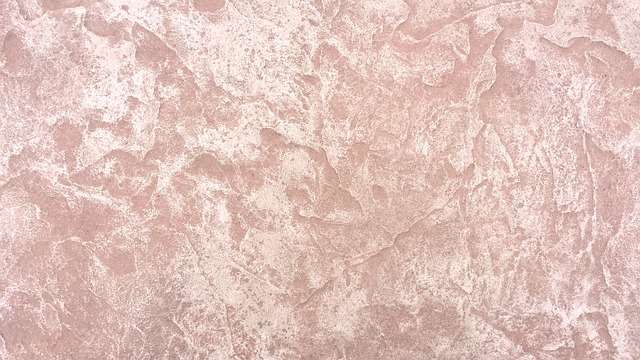Table of Contents
Looking for ways to refresh your home decor in the new year? One of the best ways to revitalise your living space is by changing your wall colours. Want to go the extra mile? Introduce textures to your walls and transform your otherwise flat and plain walls into walls that have character and tell your stories.
Interior textured walls give an extraordinary look to your house. It is a very popular type of paint to cover drywall. The paint has a heavy consistency and consists of grains of sand and/or gypsum which is bound by a water-thinned binder. The use of textured paint for interior walls creates a roughly patterned effect on your walls.
The heavy consistency and thickness make it useful for different applications and for different reasons, like covering joints in drywall and painting drywall without priming. Wall texture painting is easy to apply if we oversee the existing condition of the wall surface. For example, we can apply a better texture over wallpaper if it is not so dark. You must always check the quality of existing wall paint before applying textured paint to your interior walls.
Keep on reading to learn everything you must know about interior textured walls, texture paints and texture painting techniques in 2024.
What is Wall Texture Paint?
Wall texture paint is a popular paint type that gives your walls a 3D effect. Interior textured walls are a great way to add excitement to your living space and breathe life into your dull walls. Texture paints are a great choice for people who are looking for an easy way to cover imperfections like holes, bumps, scratches or water damage on the walls of their abode.
Why Texture Paint?
There are a plethora of reasons why you must consider texture painting for your home this year. Besides concealing wall imperfections, interior textured walls help to add a personal and unique touch to your home decor. Texture paints allow you to show your guests a glimpse of your creativity and imagination. They are also a great alternative for people who want to adorn their walls in patterns and designs but don’t want to install wallpaper.
How to Apply Texture Paint?
Wondering how to achieve paint textures? Different types of paint textures require different tools and techniques. Though you can apply texture paints for the interior walls on your own, if you want a professional finish, we recommend that you hire professional texture painting contractors. Looking for a trustworthy painting contractor in your area?
End your search now by hiring the folks at AapkaPainter. Our experts will help you with all things home renovation and that too at the best price ever!
Types of Wall Texture
Now that you know what paint textures are and how to apply them, you must explore the different types of textured paints for the interior walls that you can consider introducing to your abode in 2024. No matter what style of house you own, vintage, industrial, eclectic, maximalist or contemporary, there is a texture paint out there that is a perfect match for your home’s aesthetics.
Smooth Texture Paint
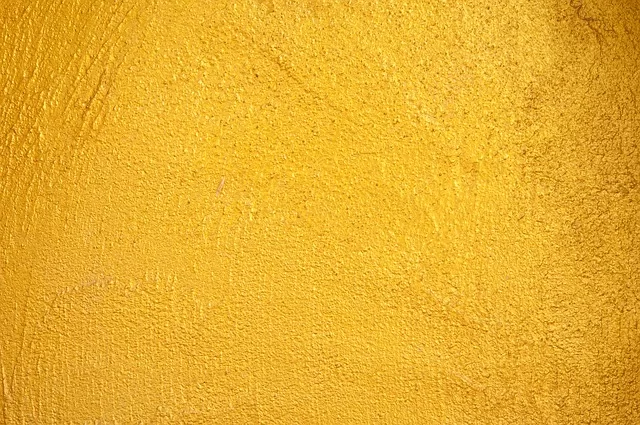
It is lighter than other types of paint textures as it doesn’t contain any kind of sand or grains and creates a smooth structure. This type of paint is heavy and thick so it requires a putty knife for application. Note that this paint is too heavy, so it gives the look of plaster after drying.
Sand Texture Paint
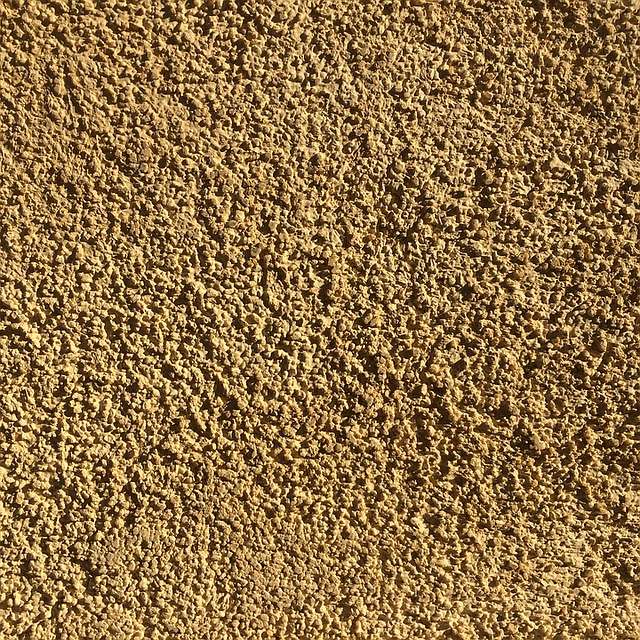
It contains sand-like additives. It is interior latex painting and is available in fine, medium and coarse grain sizes. These paint fall under two different categories as follows:
1. Premixed Sand Texture Paint

Sand additives are already present in premix texture paint. These paints with textured finish are available for direct application.
These paints don’t provide a fine finish and hence they are not able to conceal wall imperfections completely. So, it is commonly used on secondary walls instead of the main walls of a room. These types of paints are useful in the texture painting of ceilings.
2. Self(Post)-Mixing Texture Paint
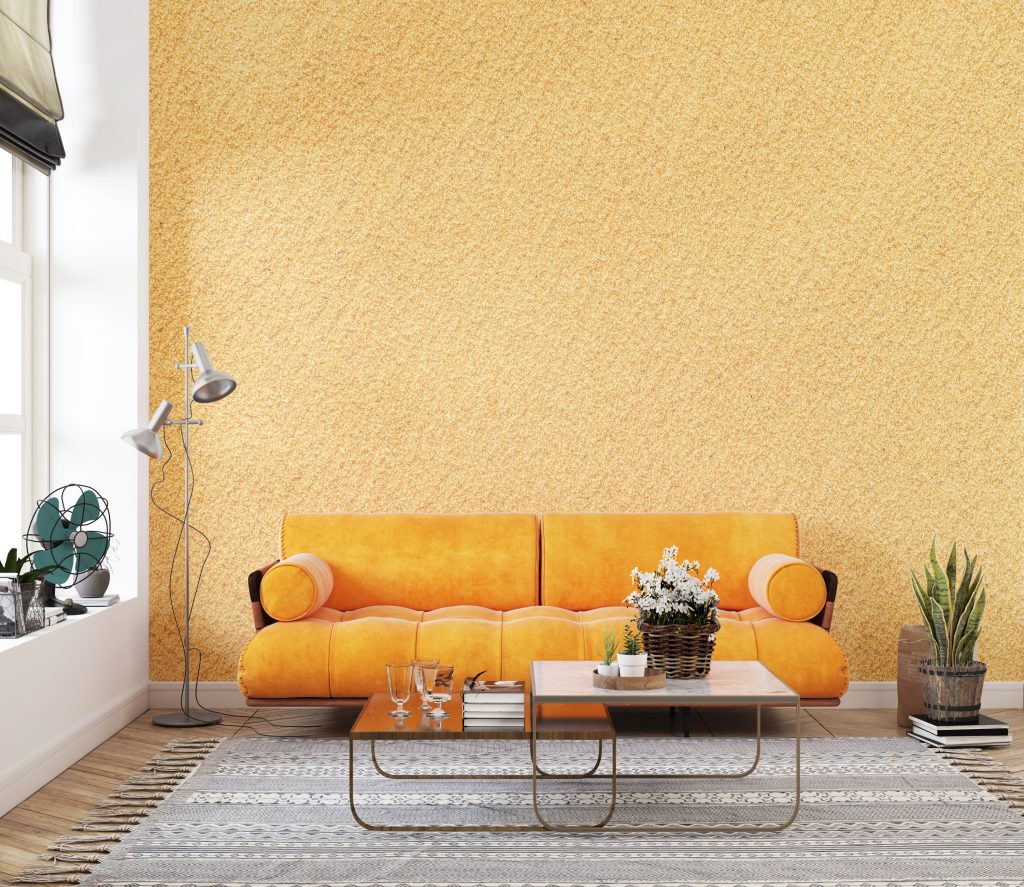
This type of textured indoor wall paint includes a mixture of base paint with sand additives. Making this paint is more of a DIY job with the addition of sand of quantity and grain size of your choice.
Knockdown Texture Paint

Knockdown painting is a perfect choice for your bedroom, living room and hallways. This type of paint involves spraying a paint coat about 1/8 inch thick. After the first coat dries, the high points are knocked down with the use of a putty knife or trowel. This type of texture paint is tough and durable, making it a perfect choice for high-traffic areas of your abode.
Popcorn Texture Paint

The appearance of popcorn texture painting is like popcorn, hence the name. The addition of styrofoam to the paint helps the texture to achieve a fluffy appearance. Note that the application of this paint with regular painting tools is hard. It needs a special texture sprayer with large nozzles for the application. This paint is very thick and beautifully covers imperfections on drywall and gives a perfect finish to your home walls.
Orange Peel Texture Paint
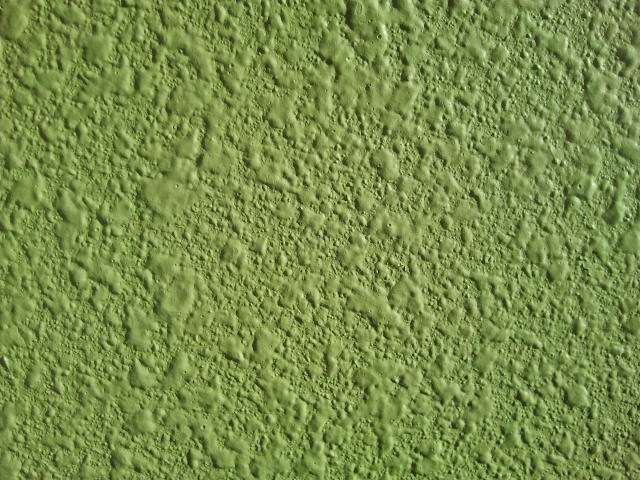
Orange peel texture paint is spread over the primer with a spray gun and is then coated with a primer or a top coat. Though this texture paint isn’t as rough as sand paint, it is very durable. Note that scraping off this paint is easy, which makes it the best choice for the bathroom and kitchen, which are prone to water and stubborn grease stains respectively.
Our colour experts at AapkaPainter have in-depth knowledge of their areas of interest. You can walk through our paint visualisation tool which gives you an idea of how to select the best texture wall colour and add some special effects with many featured texture wall colours including red, green, orange, blue, and white.
Splatter Knockdown Texture
Splatter Knockdown wall texture is performed carefully in comparison to most of the other textured wall paints because it occurs in multiple steps. It needs 2 coats of primer before spraying wall texture over a wall surface. After doing this, you will get a smoother surface by using a large flat knife. This textured wall paint is popularly used by wall texture experts on new walls that were never painted before.
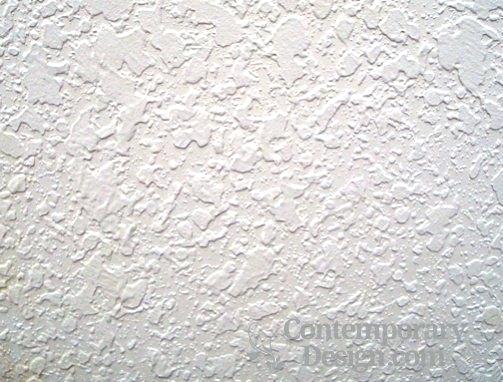
Hawk and Trowel
Hawk is a flat plate with a handle underneath that is used to create the wall texture design. The plaster is placed in the centre of the hawk and a flat rectangular tool is used to apply plaster to the surface of the walls. As a result, this textured interior paint tends to create powerful layers of texture rolling over one another.
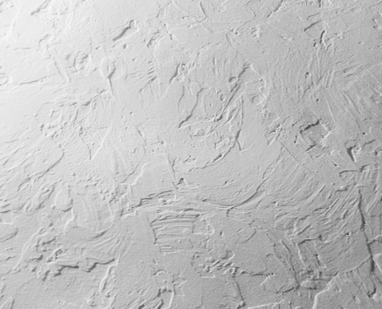
Skip Trowel
Skip trowel is the easiest and simplest to achieve because we create random patterns in this textured wall paint. It’s a very popular texture to conceal flaws in walls or to conceal exposed drywall tape.
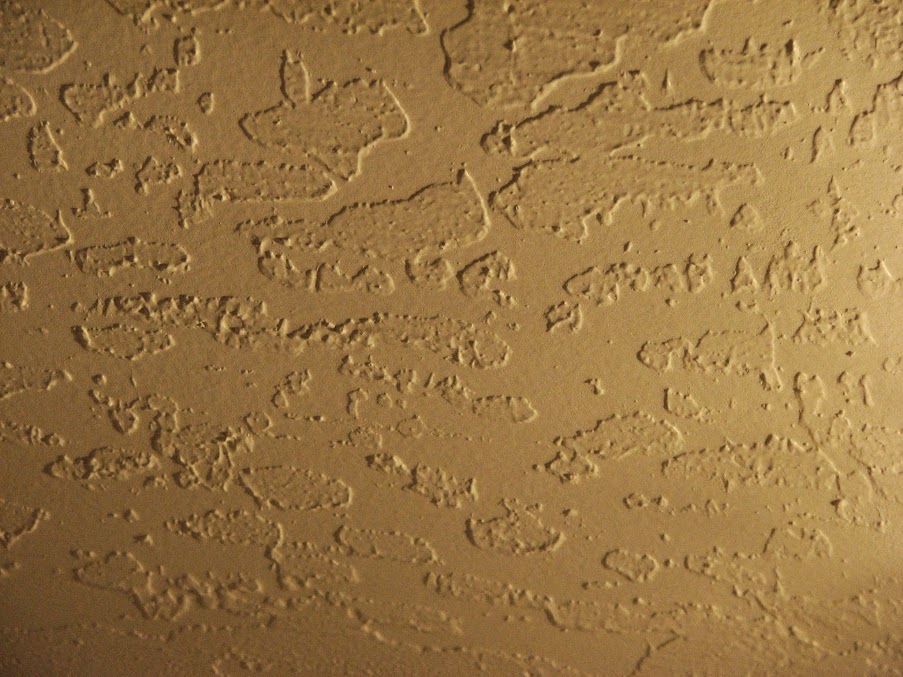
Slap Brush Texture
A textured wall paint using a ‘crows-foot’, ‘panda paw’ or ‘stomp’ brush is called a slap brush texture. It is a great texture paint to make distinct wall designs and conceal imperfections. For this texture paint, a brush is used to slap, twist or sweep the texture paint on the wall to get the desired look.
Painting Cost Calculator lets you select the best suitable texture paint and texture paint quantity required to transform your home walls like never before!
The Final Verdict
Textured interior wall paint is a great way to add real oomph to your boring walls this year. Want to try your hand at texture painting but don’t know which brand of texture paints and texture wall colour to invest in?
Fret not, we have got you covered. Browse through the well-curated list of texture paints and texture wall colours from top paint brands in India, now available all under one roof at AapkaPainter website. Hurry up and kickstart your home renovation project today with AapkaPainter!

FAQs on Different Wall Textures
What is Texture Paint?
Texture paint, a popular choice for interiors, adds a touch of natural charm by mimicking natural materials like wood or stone. It provides a cosy and warm appearance to your walls. Asian Paints Royale Play, known for its wide range of textures like Stucco, Metallics, and Dune, is a leading choice in texture paints. Our texture painting services at AapkaPainter offer a spectrum of textures, each with unique aesthetic appeal and durability, perfect for enhancing any home or office interiors.
What is textured interior paint?
Textured interior paint is a type of paint that creates a raised, three-dimensional surface on walls. It’s popular in Indian homes for its ability to add depth, texture, and visual interest to plain walls. It comes in various textures, from subtle to bold, and can be used to hide imperfections or create a focal point in a room.
Is textured paint a good idea?
Textured paint can be a great idea for Indian homes. It can add personality and character to your space, making it feel more inviting and unique. It’s also a good option for hiding minor imperfections in walls. However, it’s important to consider the overall style of your home and personal preferences before choosing textured paint.
How to apply textured paint?
Applying textured paint requires a bit more skill than traditional paint. It’s best to hire a professional painter for a flawless finish. However, if you’re confident in your DIY skills, you can follow the instructions provided by the paint manufacturer. The application process typically involves applying a base coat of paint, and then using a textured roller or stencil to create the desired effect.
Is texture paint long-lasting?
Textured paint can be long-lasting if applied correctly and maintained properly. It’s generally more durable than traditional paint and can withstand regular wear and tear. However, it may require more frequent cleaning to maintain its appearance.
Which paint is used for wall texture?
There are several types of paint that can be used for wall texture. Popular options include emulsion paint, acrylic paint, and textured paint specifically designed for creating textured effects. The best choice will depend on the desired texture and the overall look you want to achieve.
Is textured paint expensive?
The cost of textured paint can vary depending on the brand, quality, and texture. It’s generally more expensive than traditional paint due to the specialized techniques and materials involved. However, the long-lasting nature and added value it brings to your home can make it a worthwhile investment.
What are the disadvantages of textured paint?
While textured paint has many advantages, there are also some potential disadvantages to consider. It can be more difficult to clean and maintain than traditional paint, and it may be more challenging to repaint in the future. Additionally, textured paint can be more susceptible to damage from impact or moisture.
What is texture paint used for?
Texture paint is used to add a visual and tactile dimension to flat surfaces by creating a textured finish. It’s often used on walls and ceilings in India to add depth and interest to the design.
Is texture paint costly?
The cost of texture paint can vary depending on the brand and the type of texture desired. For example, Asian Paints Royale, which can be used for texturing, ranges from ₹1200–₹1500 for 15L.
What is the price of Berger texture paint?
We do not have specific pricing for Berger texture paint as our main offerings are Asian Paints and Nerolac. However, typically, texture paints can range between ₹1000 and ₹2000 for a 10-20L capacity.
paint visualizer, color visualizer, home color selection
[otw_shortcode_button href=”https://aapkapainter.com/painters-in-bangalore” size=”medium” bgcolor=”#e03f57″ icon_position=”left” shape=”round”]Book Painting Service in Bangalore[/otw_shortcode_button]
